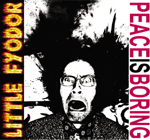For this album by Mike Olson, I want to do something unusual in a music review - put in a spoiler alert. When I finally got round to listening to this, I hadn't read the liner notes or PR material. It struck me as a complex ensemble work - horns, woodwind, drums, guitars, vocals, keyboards, strings - which slithered and moved around. Then I read how it had been made, and it revealed a whole new perspective - what had already impressed now amazed. Because the whole work (45 minutes) is an assemblage. Each musician was recorded separately, playing a score (verbal and graphic gestures), and Olson cut, selected, manipulated, layered and combined these pieces to form the 6 Incidental tracks. The method reminded me of John Wall, but the outcome is quite different. rather than the minimal pieces Wall works with, Olson has taken full units and combined them. It is a seamless construction and the knowledge was a little like the reformatting of the your understanding the whole that comes at the end of a movie like Sixth Sense or The Others.
And while sometimes method trumps outcome, in this case the outcome is well ahead. Olson called the music as Incidental as it reminds him of that form - 'written to reinforce visual activity ... the music sounds like action to me'. You could also say it is composed from incidents which have been brought together.
The feel is of experimental freeform jazz - there are fluttering woodwinds and some squonking brass. But there are also lovely strings - creating a foreceful opening, or orchestrated beautifully in Incidental 3 - driving drum percussion, guitar. And voices - soft, processed, laughing. Some periods remind me of Zappa, others are tonal ambience, while the fragmented origin is also heard in some passages of super-human playing. The shift between active and at times aggressive playing (4 has some NINish elements) and ambient passages is handled dexterously, and the narrative of each track reinforces the filmic element that Notes in the liner (6, for example, starts quietly, builds a rocky fusion middle before easing into an ambient final section). And like a good filmscore separated from its visual home, this is music that makes you take notice and listen - to the skill of both players and composer.
An exciting release.

